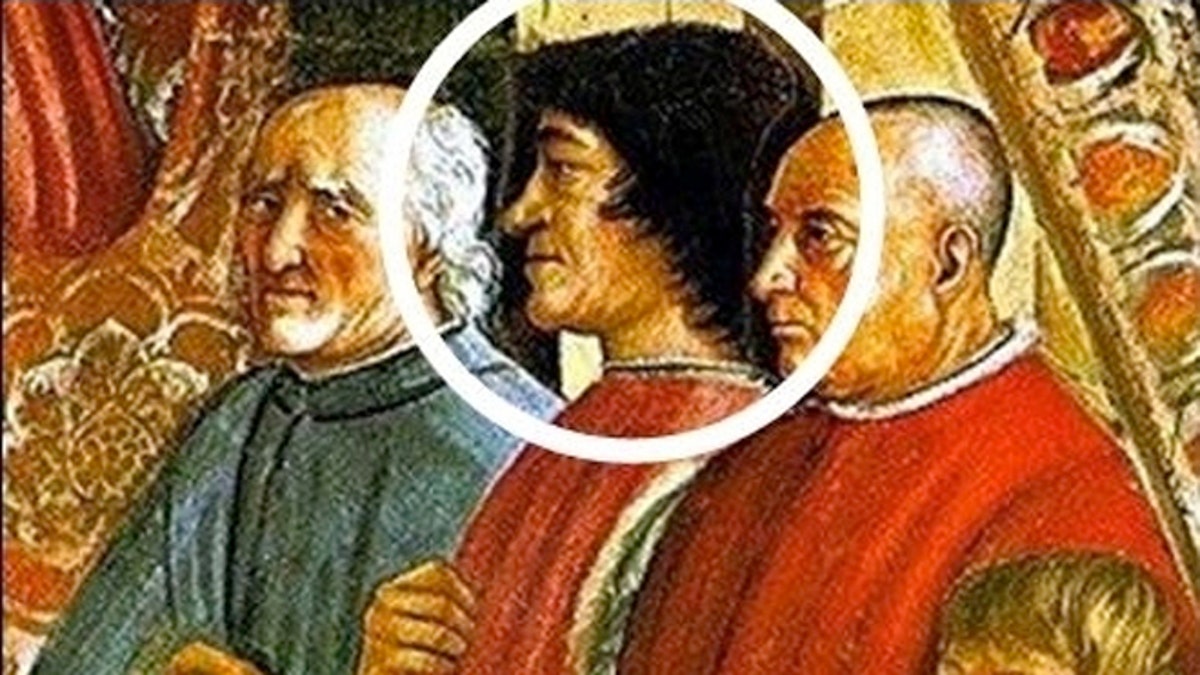
Can facial-recognition software, written to spot live faces, identify people in paintings such as this fresco showing 15th-century Italian statesman Lorenzo de' Medici (circled)? (Courtesy of UC Riverside)
Art historians at the University of California, Riverside, hope to identify people portrayed in 15th-century paintings using the same software used to spot terrorists in a crowd.
The researchers hope the software will be able to find matches between known figures in some portraits and unknown figures in others. First, however, they have to see whether programming designed for three-dimensional analysis will work as well with two dimensions.
The research team earned a $25,000 grant from the National Endowment for the Humanities to test the software on art pieces,the university announced April 25.
Recognizing people in paintings will satisfy natural human curiosity, of course, but lead researcher Conrad Rudolph said it also can help establish relationships between important political figures from the past. In the case of an unidentified person portrayed in the company of a known pope, for example, identifying the mystery man would show how well-connected he was with the leader of the Catholic Church.
[pullquote]
"Identifying the subjects of these historical portraits can help us better understand the social history of the work of art," Rudolph, a UC Riverside art historian, said in a statement.
Rudolph and his team still aren't sure, however, whether software made to recognize real, live human faces will work on two-dimensional images that weren't necessarily true to life. Queen Elizabeth I of England, for example, was known for commissioning portraits that depicted her as younger than she was and that fixed her bad teeth and smallpox scars.
To test the facial-recognition software, the research team first plans to compare busts to people's death masks, the clay molds that people used to make to commemorate famous people who died. The team's idea is that the software may have an easier time when both faces are 3D.
If that comparison works, researchers will move on to comparing death masks with 2D painted portraits, then to comparing painted portraits with one another. "If this 3D-to-3D test is encouraging, the project would systematically expand to 3D-to-2D and eventually test portraits of known subjects against unidentified portraits," Rudolph said.
If the 2D-to-2D method works, Rudolph says, other art historians may start using it regularly. It could also be used to compare and identify non-faces. The software could compare architectural details in buildings, for example, or even ancient writing in different manuscripts, to see if they were written in the same place or time. Right now, the only way to compare ancient handwriting is just to have an expert look at it.
A website and museum exhibit about the new facial recognition method are in the works, according to UC Riverside.
- Top 10 Life-Changing Inventions
- Do-It-Yourself Cat Door Recognizes Your Feline
- 8 Crowd-Sourced Transcription Projects You Can Contribute To
Copyright 2012 InnovationNewsDaily, a TechMediaNetwork company. All rights reserved. This material may not be published, broadcast, rewritten or redistributed.
